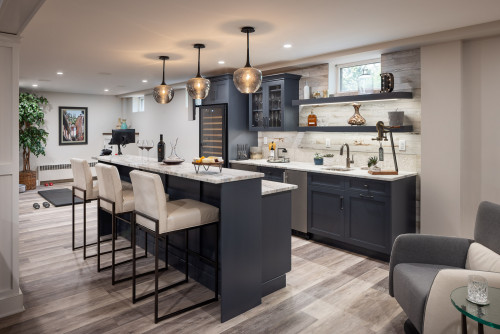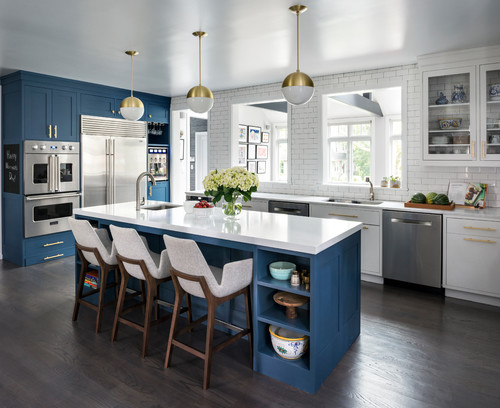

The types of Best Paint For Cabinets
The kitchen is often considered the heart of the home, a place where families gather to create meals and memories. One of the most prominent features of any kitchen is the cabinetry, which not only provides essential storage but also contributes significantly to the overall aesthetics and design. A well-executed cabinet painting project can completely transform the look and feel of your kitchen without the need for a complete renovation. However, choosing the best paint for your kitchen cabinets is crucial to ensure durability, ease of cleaning, and a beautiful finish.
In this comprehensive guide, we will explore the key factors to consider when selecting the best paint for your kitchen cabinets, the best types of paint available, and the proper techniques and tools for application. Additionally, we will discuss eco-friendly paint options, the pros and cons of DIY versus hiring a professional painter, and how to maintain and care for your newly painted cabinets. To spark your creativity, we will also delve into current trends and inspirational ideas for painted kitchen cabinets. So, let’s get started on your journey to revitalize your kitchen and create a space that truly reflects your personal style and taste.
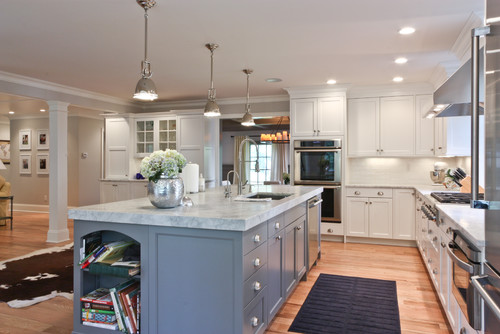
Key factors to consider when choosing the best paint for cabinets
A. Durability
- Resistance to wear and tear: When selecting the best paint for cabinets, it’s essential to choose a durable, high-quality product that can withstand daily use. Cabinets are frequently opened and closed, so the paint must be resistant to chipping, peeling, and general wear and tear. Look for paints specifically formulated for cabinetry or high-traffic areas, as these tend to be more robust and long-lasting.
- Long-lasting finish: The best paint for kitchen cabinets should provide a long-lasting finish that maintains its color and sheen over time. High-quality paints will have better color retention and resistance to fading, ensuring your cabinets look fresh and new for years to come.
B. Moisture resistance
- Resistance to humidity and steam: Kitchens are prone to high levels of humidity and steam due to cooking and dishwashing activities. The best paint for cabinets should be moisture-resistant to prevent the paint from bubbling, peeling, or warping when exposed to these conditions. Waterborne acrylic, alkyd, and oil-based paints are good options for moisture resistance.
- Preventing damage from water exposure: The best paint for kitchen cabinets should also protect the underlying wood from water damage. Choose a paint that forms a tight bond with the cabinet surface and creates a barrier against water penetration.
C. Ease of cleaning
- Resistance to stains and grease: Kitchen cabinets can accumulate stains and grease over time, so it’s crucial to choose a paint that is resistant to these substances. The best paint for cabinets should be easy to clean and maintain, allowing you to wipe away dirt, grime, and spills without damaging the paint.
- Simple maintenance requirements: The best paint for kitchen cabinets should require minimal maintenance. Choose a paint that is easy to touch up and doesn’t require frequent repainting or refinishing. High-quality paints with self-leveling properties can also make maintenance easier, as they produce a smoother, more even finish.
D. Paint finish
- Different finishes and their benefits: Various paint finishes offer different benefits and aesthetics. Common finishes for kitchen cabinets include matte, satin, semi-gloss, and high-gloss. Matte finishes provide a non-reflective, modern look but may be less durable and harder to clean. Satin and semi-gloss finishes offer a balance between durability and sheen, making them a popular choice for kitchen cabinets. High-gloss finishes provide maximum durability and stain resistance but can show surface imperfections more easily.
- Matching the finish to the kitchen’s design: Consider the overall design and style of your kitchen when choosing a paint finish. The best paint for kitchen cabinets should complement your kitchen’s aesthetic, whether it’s traditional, contemporary, or farmhouse.
E. Color selection
- Choosing a color that complements the kitchen’s overall theme: The color of your kitchen cabinets should blend seamlessly with the rest of your kitchen design. Consider the color of your countertops, backsplash, appliances, and flooring when selecting the best paint for cabinets. Keep the overall theme of your kitchen in mind, whether it’s a monochromatic scheme or a mix of complementary colors.
- Tips for selecting the right shade: To choose the best paint for kitchen cabinets, first gather paint swatches and samples to test in your kitchen. Observe how the colors look under different lighting conditions and times of day. You may also consider using paint visualization tools or apps to help envision how your chosen color will look in your space. Finally, consider the impact of the color on the perceived size and brightness of your kitchen. Lighter colors can make a small kitchen appear larger and brighter, while darker colors can create a cozy, dramatic atmosphere.
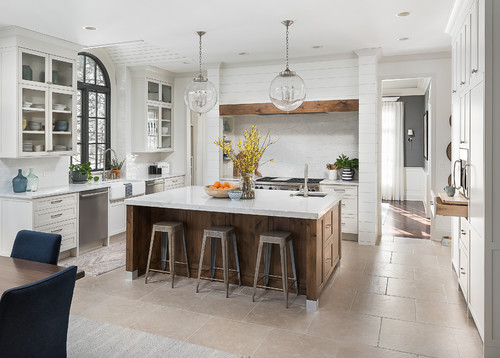
Best types of paint for kitchen cabinets
A. Acrylic paint for Cabinets
- Benefits of using acrylic paint for kitchen cabinets: Acrylic paint is a popular choice for kitchen cabinets due to its excellent adhesion, durability, and water resistance. Some advantages of acrylic paint include:
- Quick drying time
- Low odor and low VOCs (volatile organic compounds)
- Easy clean-up with soap and water
- Resistance to yellowing over time
- Wide range of colors and finishes available
- Tips for application and maintenance: To achieve the best results with acrylic paint for cabinets, follow these tips:
- Use a high-quality primer designed for use with acrylic paint
- Apply thin, even coats using a brush, roller, or paint sprayer
- Sand lightly between coats to ensure a smooth finish
- Allow sufficient drying time between coats as recommended by the manufacturer
- Clean painted surfaces gently with mild soap and water
B. Oil-based paint for Cabinets
- Benefits of using oil-based paint for cabinets: Oil-based paint is known for its durability, making it a good option for kitchen cabinets. Some advantages of oil-based paint include:
- Exceptional durability and resistance to wear
- Rich, vibrant colors with excellent color retention
- Smooth, self-leveling finish
- Resistance to water and moisture
- Tips for application and maintenance: To achieve the best results with oil-based paint for kitchen cabinets, follow these tips:
- Use a high-quality primer compatible with oil-based paint
- Apply thin, even coats using a brush, roller, or paint sprayer
- Allow adequate drying time between coats, as oil-based paints take longer to dry
- Provide proper ventilation during application due to strong fumes
- Clean painted surfaces gently with mild soap and water or a damp cloth
C. Alkyd paint for Cabinets
- Benefits of using alkyd paint for cabinets: Alkyd paint is a synthetic resin paint that combines the benefits of oil-based and acrylic paints. Some advantages of alkyd paint include:
- Excellent durability and adhesion
- Smooth, self-leveling finish with fewer brush strokes
- Good resistance to moisture and stains
- Faster drying time than traditional oil-based paints
- Tips for application and maintenance: To achieve the best results with alkyd paint for kitchen cabinets, follow these tips:
- Use a high-quality primer designed for use with alkyd paint
- Apply thin, even coats using a brush, roller, or paint sprayer
- Allow sufficient drying time between coats as recommended by the manufacturer
- Provide proper ventilation during application due to strong fumes
- Clean painted surfaces gently with mild soap and water
D. Chalk paint for Cabinets
- Benefits of using chalk paint for cabinets: Chalk paint is a popular choice for those seeking a distressed or vintage look for their kitchen cabinets. Some advantages of chalk paint include:
- Easy application with minimal surface preparation
- Ability to create unique finishes and textures
- Low VOCs and low odor
- Quick drying time
- Tips for application and maintenance: To achieve the best results with chalk paint for kitchen cabinets, follow these tips:
- Lightly sand and clean the surface before painting
- Apply thin, even coats using a brush or roller
- Distress the paint with sandpaper or a sanding sponge, if desired, to create a vintage look
- Seal the paint with a clear wax or topcoat for added durability
- Clean painted surfaces gently with a damp cloth
E. Milk paint for Cabinets
- Benefits of using milk paint for cabinets: Milk paint is a natural, eco-friendly paint option made from milk protein, lime, and pigments. Some advantages of milk paint include:
- Non-toxic and environmentally friendly
- Unique, rustic appearance with a matte finish
- Easy to mix and customize colors
- Low odor and quick drying time
- Tips for application and maintenance: To achieve the best results with milk paint for cabinets, follow these tips:
- Mix the milk paint powder with water according to the manufacturer’s instructions
- Lightly sand and clean the surface before painting
- Apply thin, even coats using a brush or roller
- Distress the paint with sandpaper or a sanding sponge, if desired, to create a vintage look
- Seal the paint with a clear wax or topcoat for added durability
- Clean painted surfaces gently with a damp cloth or mild soap and water
F. Hybrid Enamel Paint for Cabinets
- Benefits of using hybrid enamel paint for cabinets: Hybrid enamel paint is a newer option on the market, combining the best features of water-based and oil-based paints. Some advantages of hybrid enamel paint include:
- Excellent durability and adhesion, similar to oil-based paints
- Low VOCs and low odor, similar to water-based paints
- Easy clean-up with soap and water
- Resistance to yellowing over time
- Good resistance to moisture and stains
- Tips for application and maintenance: To achieve the best results with hybrid enamel paint for cabinets, follow these tips:
- Use a high-quality primer designed for use with hybrid enamel paint
- Apply thin, even coats using a brush, roller, or paint sprayer
- Allow sufficient drying time between coats as recommended by the manufacturer
- Provide proper ventilation during application, although fumes are typically less potent than with oil-based paints
- Clean painted surfaces gently with mild soap and water or a damp cloth
G. Waterborne Acrylic Alkyd Paint for Cabinets
- Benefits of using waterborne acrylic alkyd paint for cabinets: Waterborne acrylic alkyd paint is a combination of waterborne acrylic and alkyd resins, offering an excellent balance of performance and environmental friendliness. Some advantages of waterborne acrylic alkyd paint include:
- Superior leveling and flow, resulting in a smooth finish
- Faster drying time than traditional alkyd paints
- Low VOCs and low odor
- Easy clean-up with soap and water
- Good resistance to moisture, stains, and wear
- Tips for application and maintenance: To achieve the best results with waterborne acrylic alkyd paint for cabinets, follow these tips:
- Use a high-quality primer designed for use with waterborne acrylic alkyd paint
- Apply thin, even coats using a brush, roller, or paint sprayer
- Allow sufficient drying time between coats as recommended by the manufacturer
- Provide proper ventilation during application, although fumes are typically less potent than with oil-based paints
- Clean painted surfaces gently with mild soap and water or a damp cloth
When it comes to choosing the best paint for kitchen cabinets, it’s essential to consider the unique characteristics and performance of various paint options, including acrylic, oil-based, alkyd, chalk, milk, hybrid enamel, and waterborne acrylic alkyd paints. By evaluating factors such as durability, moisture resistance, ease of cleaning, finish, and environmental impact, you can select a paint that will not only enhance your kitchen’s appearance but also provide lasting protection for your cabinets.
Remember that proper surface preparation, application techniques, and maintenance are crucial to achieving a professional-looking and durable result. With careful planning and attention to detail, you can transform your kitchen space with a fresh coat of paint on your cabinets, creating a stylish and functional environment that you’ll enjoy for years to come.
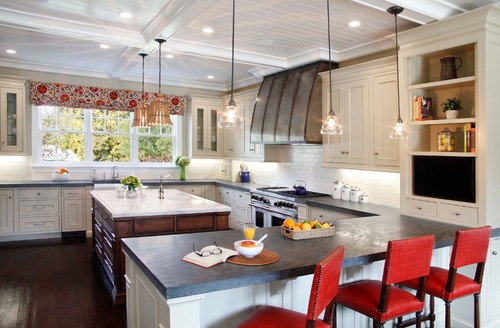
Paint application techniques and tools
A. Paint brushes
- Types of brushes: There are various types of paint brushes available for different purposes and finishes. When painting kitchen cabinets, it’s essential to choose the right brush for the best results. Some common types of brushes include:
- Synthetic bristle brushes: Ideal for water-based paints, such as acrylic and latex
- Natural bristle brushes: Best suited for oil-based paints
- Angled sash brushes: Designed for cutting in and painting edges with precision
- Flat brushes: Suitable for covering large, flat surfaces
- Best practices for using brushes: To achieve a professional finish with paint brushes, follow these tips:
- Choose the appropriate brush size for the area you’re painting
- Load the brush with paint, but avoid overloading to minimize drips and uneven coverage
- Apply paint using long, smooth strokes, and maintain a wet edge to avoid brush marks
- Clean brushes thoroughly after use and store them properly to ensure their longevity
B. Paint rollers
- Types of rollers: Paint rollers are another option for applying paint to kitchen cabinets. Some common types of rollers include:
- Foam rollers: Provide a smooth finish, suitable for flat surfaces
- Microfiber rollers: Offer a smooth finish with minimal stippling, ideal for semi-gloss and high-gloss finishes
- Nap rollers: Available in various lengths, with shorter naps providing a smoother finish
- Best practices for using rollers: To achieve a professional finish with paint rollers, follow these tips:
- Choose the appropriate roller nap length for the desired finish
- Load the roller evenly with paint, removing excess to avoid drips and runs
- Apply paint using a “W” or “M” pattern for even coverage, and finish with straight, parallel strokes
- Clean rollers thoroughly after use and store them properly to ensure their longevity
C. Paint sprayers
- Types of sprayers: Paint sprayers can provide a smooth, professional finish on kitchen cabinets. Some common types of sprayers include:
- Airless paint sprayers: Use high pressure to atomize paint, suitable for large projects and various paint types
- HVLP (High Volume Low Pressure) sprayers: Provide a finer finish with less overspray, ideal for detailed work and thinner materials
- Best practices for using sprayers: To achieve a professional finish with paint sprayers, follow these tips:
- Choose the appropriate sprayer for the type of paint you’re using and the size of your project
- Test the spray pattern on a scrap piece of material before applying paint to the cabinets
- Maintain a consistent distance and speed while spraying for even coverage
- Wear proper safety gear, such as a respirator and goggles, to protect yourself from paint particles
- Clean the sprayer thoroughly after use to ensure proper functioning
D. Sanding and priming
- Importance of proper surface preparation: Proper surface preparation is crucial for achieving a long-lasting, professional finish on kitchen cabinets. Sanding and priming help to create a smooth, even surface that promotes better paint adhesion and coverage.
- Tips for sanding and priming: To effectively sand and prime your cabinets, follow these tips:
- Remove hardware, doors, and drawers before beginning the sanding process
- Clean the surfaces with a degreaser or TSP solution to remove dirt, grease, and grime
- Sand the surfaces using medium-grit sandpaper (120-150 grit) to create a smooth surface
- Wipe down the surfaces with a tack cloth to remove any dust or debris
- Apply a high-quality primer specifically designed for the type of paint you’re using (acrylic, oil-based, etc.), following the manufacturer’s instructions for drying time and coverage
- Lightly sand the primer with fine-grit sandpaper (220-240 grit) to ensure a smooth, even surface for painting
- Wipe down the surfaces with a tack cloth again to remove any dust or debris before painting
By using the appropriate paint application techniques and tools, such as brushes, rollers, or sprayers, you can achieve a professional, long-lasting finish on your kitchen cabinets. Remember that proper surface preparation, including sanding and priming, is essential for promoting better paint adhesion and coverage. With careful attention to detail and the right approach, you can transform your kitchen space with a fresh coat of the best paint for kitchen cabinets, creating a stylish and functional environment that you’ll enjoy for years to come.
FAQs about Best Paint For Cabinets
- What is the best paint for kitchen cabinets?
The best paint for kitchen cabinets depends on your specific needs and preferences. Some popular options include acrylic, oil-based, alkyd, chalk, milk, hybrid enamel, and waterborne acrylic alkyd paints. Consider factors such as durability, moisture resistance, ease of cleaning, finish, and environmental impact when choosing the best paint for your cabinets.
- Can I paint my cabinets without sanding?
While it is possible to paint cabinets without sanding, it is not recommended. Proper surface preparation, including sanding and priming, is essential for promoting better paint adhesion and coverage. Skipping this step may result in a less durable finish that is prone to chipping or peeling.
- Should I use a brush, roller, or sprayer to paint my kitchen cabinets?
The choice between a brush, roller, or sprayer depends on your skill level, budget, and desired finish. Brushes are suitable for detailed work and provide a hand-painted look, while rollers offer a smooth finish on flat surfaces. Sprayers can provide a professional finish but require more preparation and cleanup. Consider your specific needs and preferences when choosing the right application method for your cabinets.
- How do I choose the right color for my kitchen cabinets?
When selecting a color for your kitchen cabinets, consider the overall theme and design of your kitchen, as well as your personal taste. Light colors can make a small kitchen appear more spacious, while dark colors can add depth and drama. You may also want to consult a color wheel or use online tools to help you visualize different color combinations.
- How many coats of paint do I need for my kitchen cabinets?
The number of coats required for your kitchen cabinets depends on the type of paint you’re using, the color of the existing cabinets, and the desired level of coverage. In general, two to three coats are recommended for most paint types, but you may need more coats for darker colors or to achieve full coverage over a contrasting base color.
- How long should I wait between coats of paint for kitchen cabinets?
The drying time between coats of paint depends on the type of paint you’re using, as well as the temperature and humidity of your work area. In general, it’s a good idea to follow the manufacturer’s recommendations for drying times. Typically, water-based paints dry faster than oil-based paints, with some requiring as little as one hour between coats, while others may require 24 hours or more.
- Do I need to seal or protect the paint on my kitchen cabinets?
While not always necessary, sealing or protecting your painted kitchen cabinets can provide added durability and resistance to wear and tear. Depending on the type of paint you’ve chosen, you may want to apply a clear topcoat, such as a polyurethane or a water-based sealer, for added protection. Always follow the manufacturer’s recommendations for the specific product you’re using.


